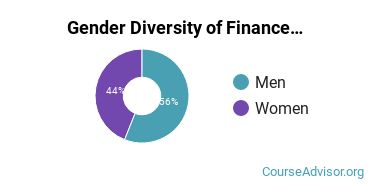Finance at Missouri State University - Springfield
If you are interested in studying finance, you may want to check out the program at Missouri State University - Springfield. The following information will help you decide if it is a good fit for you.Missouri State is located in Springfield, Missouri and approximately 23,505 students attend the school each year.
Want to know more about the career opportunities in this field? Check out the Careers in Finance section at the bottom of this page.
Missouri State Finance Degrees Available
- Bachelor’s Degree in Finance
Missouri State Finance Rankings
The finance major at Missouri State is not ranked on College Factual’s Best Colleges and Universities for Finance. This could be for a number of reasons, such as not having enough data on the major or school to make an accurate assessment of its quality.
Find Missouri State University - Springfield Programs
Managing and quantifying money is at the heart of the online bachelor's degree in finance at SNHU. You'll learn the fundamentals of investments, address key managerial issues, examine ethics from every angle and build the skillset to be a player in the multidimensional business marketplace.
Prepare to advance your current career in finance with Southern New Hampshire University's online Master's in Finance degree program.
Finance Student Demographics at Missouri State
Take a look at the following statistics related to the make-up of the finance majors at Missouri State University - Springfield.
Missouri State Finance Bachelor’s Program

About 82% of those who receive a bachelor's degree in finance at Missouri State are white. This is above average for this degree on the nationwide level.
The following table and chart show the race/ethnicity for students who recently graduated from Missouri State University - Springfield with a bachelor's in finance.

| Race/Ethnicity | Number of Students |
|---|---|
| Asian | 2 |
| Black or African American | 1 |
| Hispanic or Latino | 2 |
| White | 92 |
| International Students | 4 |
| Other Races/Ethnicities | 11 |
Related Majors
Related Programs
Learn about other programs related to Missouri State University - Springfield that might interest you.
Invest in the analytical and quantitative skills you need to succeed in a career in finance with this online bachelor's from Southern New Hampshire University.
BS in Business Administration - Finance
Increase your potential in nearly any industrial, financial, nonprofit or government organization with this online business administration bachelor's degree from Southern New Hampshire University.
MS in Finance - Corporate Finance
Acquire a thorough understanding of the financial landscape and prepare for a high-level corporate role with this specialized online graduate degree from Southern New Hampshire University.
Careers That Finance Grads May Go Into
A degree in finance can lead to the following careers. Since job numbers and average salaries can vary by geographic location, we have only included the numbers for MO, the home state for Missouri State University - Springfield.
| Occupation | Jobs in MO | Average Salary in MO |
|---|---|---|
| General and Operations Managers | 46,490 | $105,280 |
| Financial Managers | 7,630 | $136,520 |
| Loan Officers | 7,130 | $76,550 |
| Personal Financial Advisors | 5,050 | $85,830 |
| Chief Executives | 4,410 | $167,980 |
References
*The racial-ethnic minorities count is calculated by taking the total number of students and subtracting white students, international students, and students whose race/ethnicity was unknown. This number is then divided by the total number of students at the school to obtain the racial-ethnic minorities percentage.
More about our data sources and methodologies.

